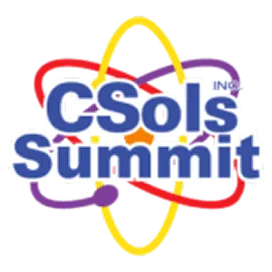Situation
A large specialty chemicals and materials company needed help to manage a global LIMS selection and implementation project for their R&D labs. The client is digitalizing in support of data security, research productivity, and data collaboration. Due to past mergers and acquisitions, there were a number of heritage systems in use across the organization. These systems lacked instrument connectivity and a cohesive data organization structure. The client's business managers felt it was important to simplify their informatics portfolio with a modern LIMS solution that could provide better connectivity, access, and security.
Objectives
The overall project goals were to improve productivity and reduce the multitude of outdated informatics solutions and platforms within the organization. The client wanted to standardize their R&D laboratories by centralizing their lab data, streamlining the workflow processes, and modernizing their laboratory data pipeline and report generation. This would involve providing instrument connectivity, data management best practices, and easy access to data for analysis. The project was split into two phases- select the appropriate LIMS product and then standardize all business units around the chosen LIMS (STARLIMS) and Dotmatics ELN. STARLIMS configuration was then site- and workflow-specific.
Challenges
Securing buy-in from stakeholders was the first challenge. Some groups were eager to move toward standardization, some were resistant to change, and some could not standardize (due to budget constraints). Because of these mixed reactions, the client required consistent project management across the sites. The project progressed under the guidance of upper-level management, as some of the business units engaged in requirements and planning discussions with CSols. Additional challenges that arose during the implementation included scope creep, a technical instrument data file parsing issue, and limited availability of the client's subject matter experts.
CSols' Role in the Solution
CSols helped this long-standing client create a list of requirements and then worked with vendors and the client's stakeholders to facilitate demonstrations and meetings to discuss business-specific features of each LIMS. This effort required input from the business units as well as the vendors' personnel in grading how the software performed against specific requirements.
After review of the data, STARLIMS and Dotmatics were selected as the standardized informatics solutions, as each had desirable advantages for specific business units.
CSols managed the eight global site implementations based on domain, industry, and project management expertise to provide consistency across all platforms. CSols collaborated with the LIMS vendor and the client to provide consistent leadership and guidelines for the various implementation sites. Roles and responsibilities included the following:
- The CSols program manager oversaw the LIMS implementations, timelines, and impacts and provided recurring updates to the client and internal teams.
- The CSols development team configured static data and workflows and customized reports, focusing on request creation, sample management, and result entry options.
- The CSols developers also wrote custom code for the instrument file parsing routines, which was a successful approach but took additional time to design, develop, and test.
Benefits
- The detailed vendor selection process guided the client through a rigorous request for proposal and demonstration process to capture company and product information needed to narrow their selection choices to two laboratory informatics vendors, each with significantly different platforms and strengths for the various types of businesses involved. The business units were then able to engage in selecting the product that would work best for them and begin the implementation.
- The timeline of the implementation across the eight global sites was crafted strategically by the CSols program manager to cause little to no business process disturbances. Any disturbances that did arise were managed appropriately and quickly.
- The LIMS consolidation project reduced the number of informatics platforms that the client had to support as an organization. As a result, support costs will be decreased as there will be fewer technologies to support and internal technological understanding will increase across business units.
- The client quickly realized efficiencies from the work CSols performed to centralize data, automate report generation, and simplify request workflow. To maximize productivity, automation was used where possible, including for request creation and result processing. The report improvements gave the client the ability to generate metrics reports using the same form/format and common tools across the organization. Automating the request approval process was a unique aspect of this project, as each site had various needs for the same module.
- The CSols developers built each system for future growth, so the client has the ability to expand their LIMS implementation with additional modules and to refine their workflows and SOPs.
Additional benefits the client received through the LIMS implementation and standardization project included the following:
- Shorter turnaround times for testing samples
- Reduced administrative processes and maintenance
- Eliminated redundancy errors by using automation (where possible)
- Upgraded request module and improved the overall request workflow
- Easily replicable file parsing approach
- Implemented a smart lab approach where the client received the following:
- Centralized lab data
- Streamlined workflow processes
- Modernized laboratory data pipeline
- Improved report generation
Learn more about this project by downloading the full STARLIMS case study.
Return to the main case study page to view more STARLIMS projects that CSols has worked on.




Comments